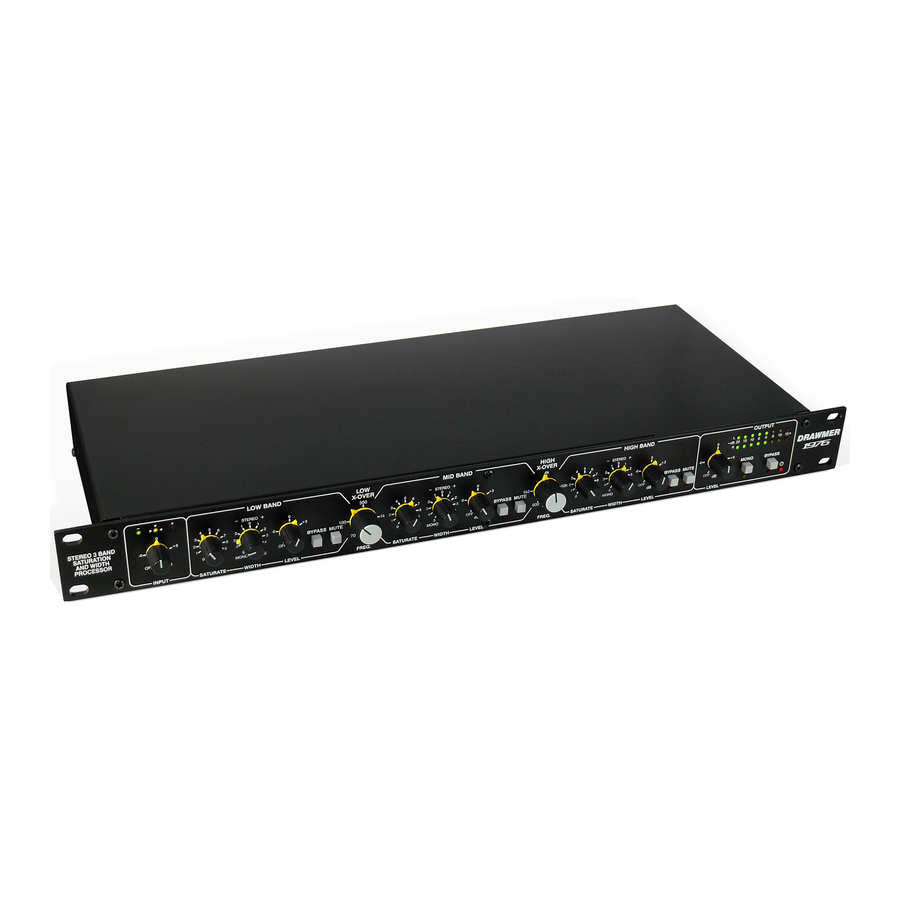- ページ 9
コンピュータ・ハードウェア Drawmer 1976のPDF 取扱説明書をオンラインで閲覧またはダウンロードできます。Drawmer 1976 13 ページ。 Stereo 3 band saturation and width processor

The following are a few handy tips to help get the most out of the 1976:
The Level Best
When setting up the 1976 it's imperative that the input level has to be set up correctly as
it has a direct influence on the amount of saturation applied - the more you drive the input
the more saturation occurs. Set the input control so that the central yellow led is lit the
majority of the time and the red led only on the very highest signal peaks. Too low a level
(green led is lit on the meter) and little saturation will occur but the signal level will rise,
however, too high (the red led) and more saturation will take place but, as saturation is a
dynamic process, the signal will also be attenuated as the audio becomes distorted.
Use this - you can adjust the input level slightly rather than all three saturation controls to get the correct amount of
distortion desired. You will need to adjust the output level to compensate. Bare in mind that this should only be done
subtly once the three bands are close to correct in the first place.
Useful Frequencies
As the 1976 comprises a set of crossover filters that splits the audio signal into three frequency bands it is imperative that
these bands are set correctly. The following diagram provides a general idea of some useful frequencies that will aid in
setting the crossover frequencies:
Use your ears
There are no hard and fast rules of how to apply saturation. In theory saturation can be applied to any audio signal, after all, on
the whole it's used to emulate old recording equipment where there was no option but to have analogue saturation in one form
or another. It really is a case of playing with the 1976 saturation controls until you like the sound and it enriches your mix. Be
careful not to over do it though because saturation is capable of completely ruining the audio.
As a rule apply the saturation until you can hear it then back it off to make it more subtle.
Where it sat
As mentioned, saturation can be used pretty much anywhere, however it can be applied to some sounds far more effectively
than others:
Percussion
Drums are one of the best sounds in which to use saturation. It can be used to 'glue' the whole drum bus together, injecting
some punch and excitement, giving them depth and life, and adding harmonics that are pleasing to the ear, whilst taming
rogue transients and high end harshness using natural compression.
Saturation and Width Tips
DRAWMER 1976 O
PERATOR'S
M
L
ANUA
9
